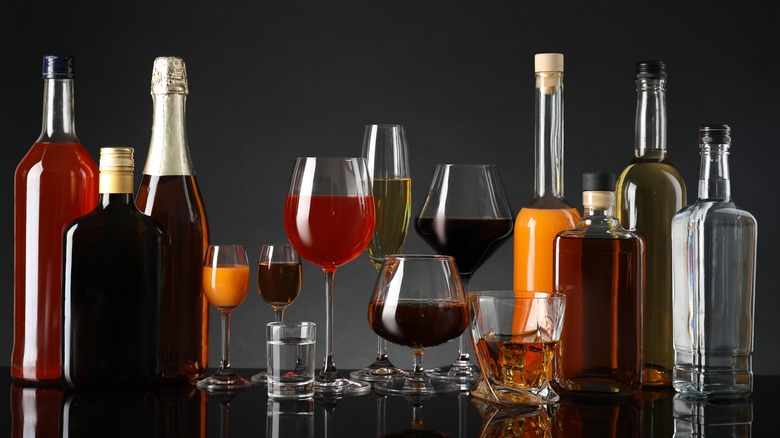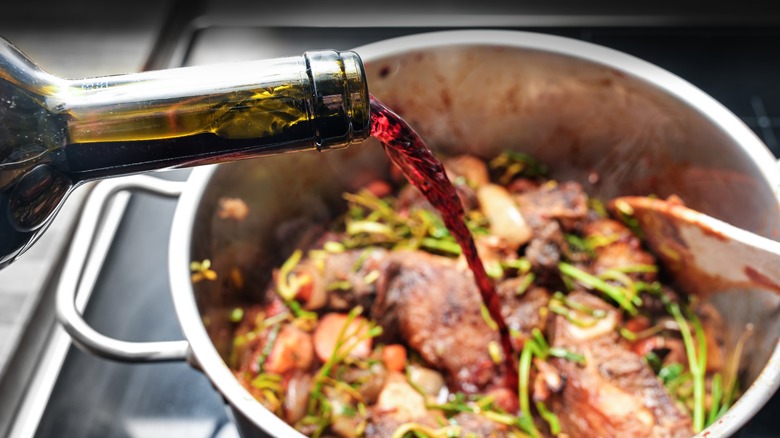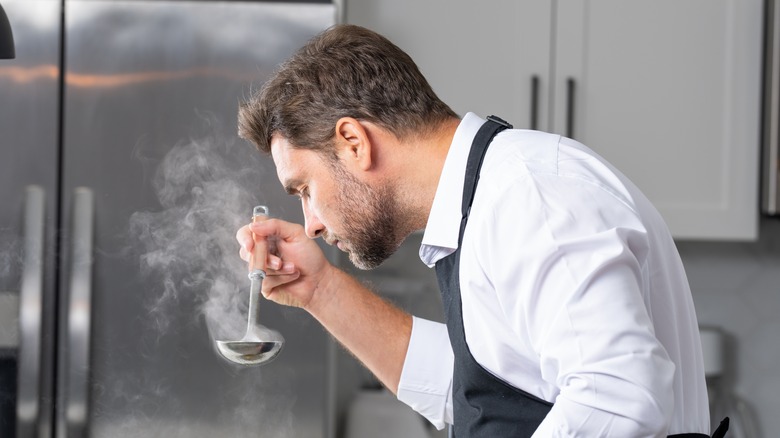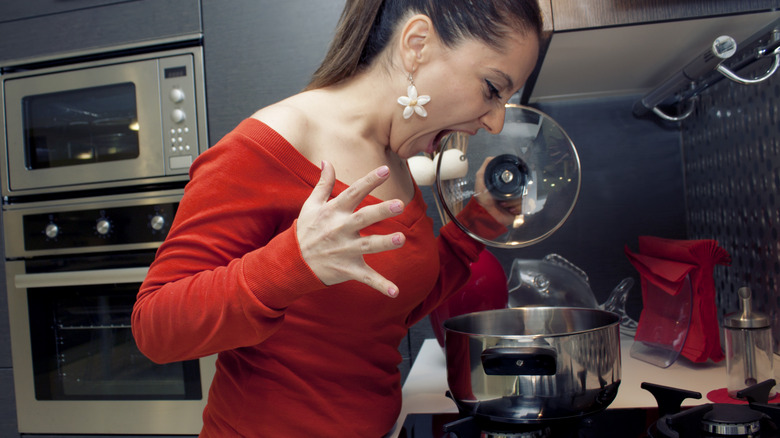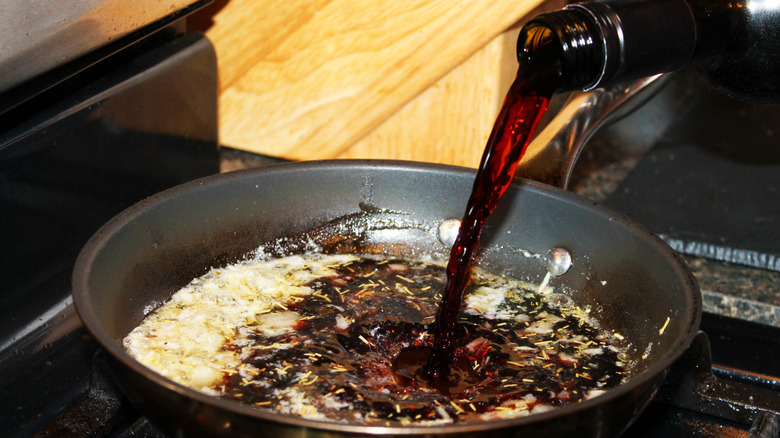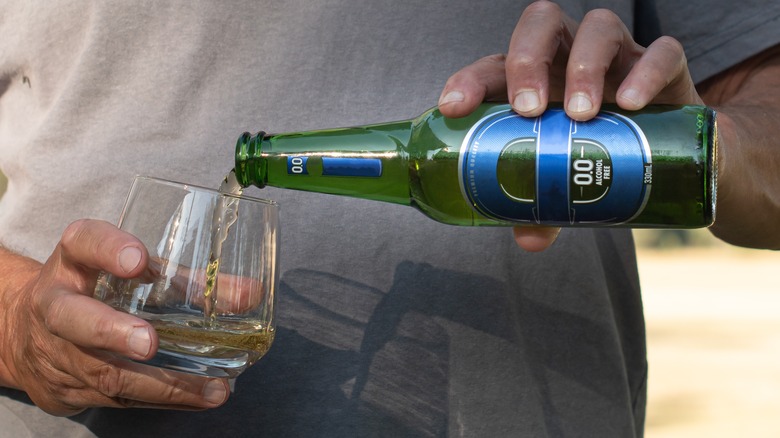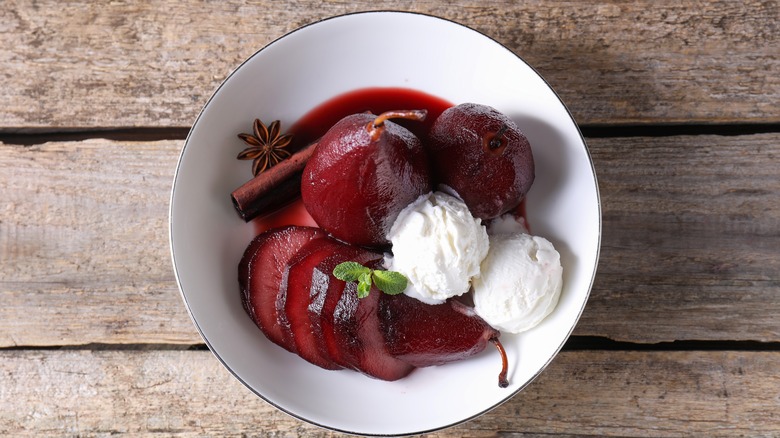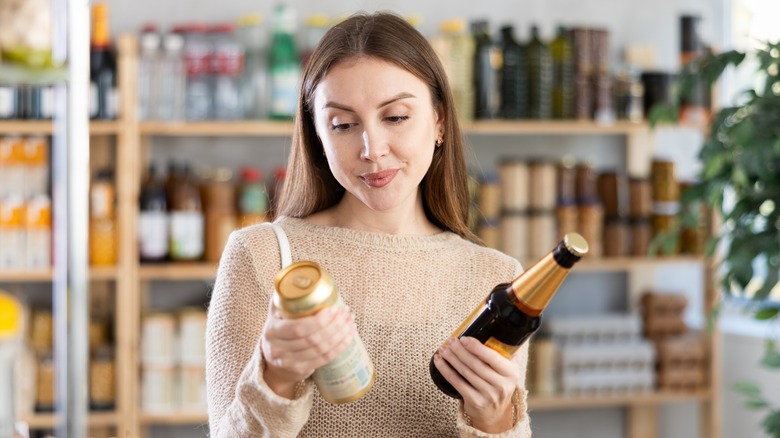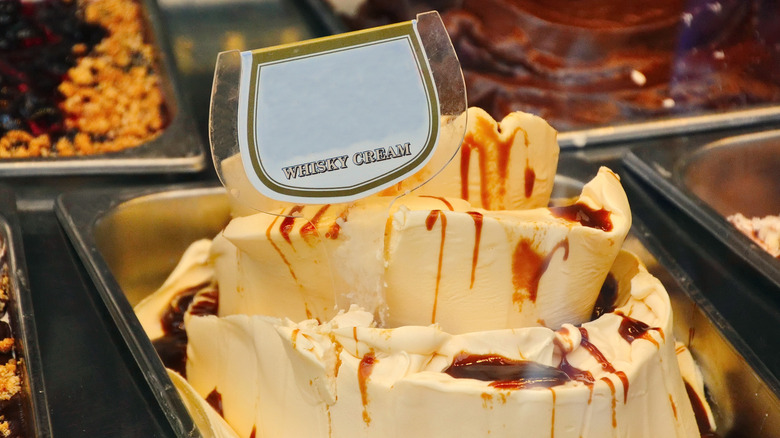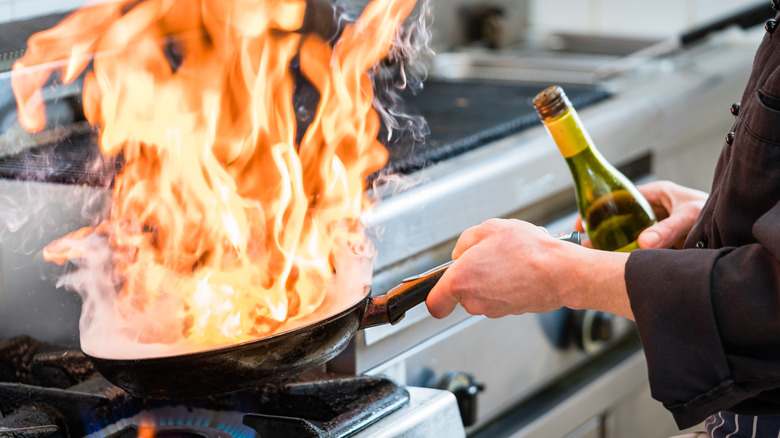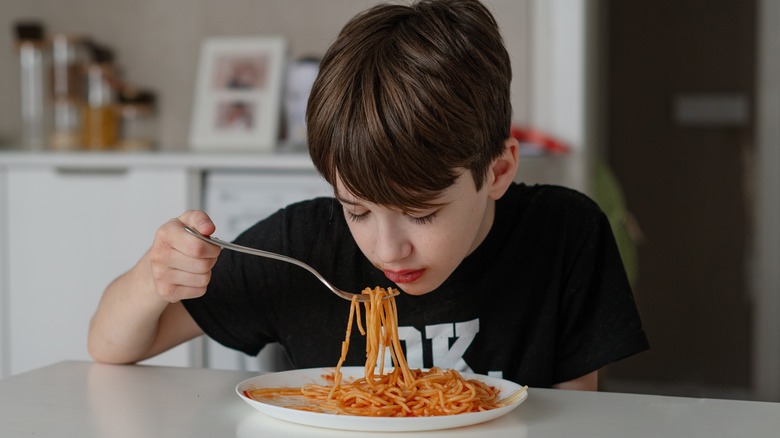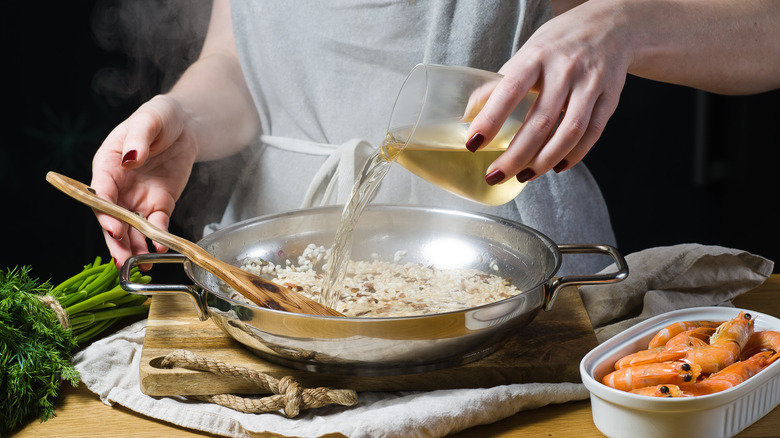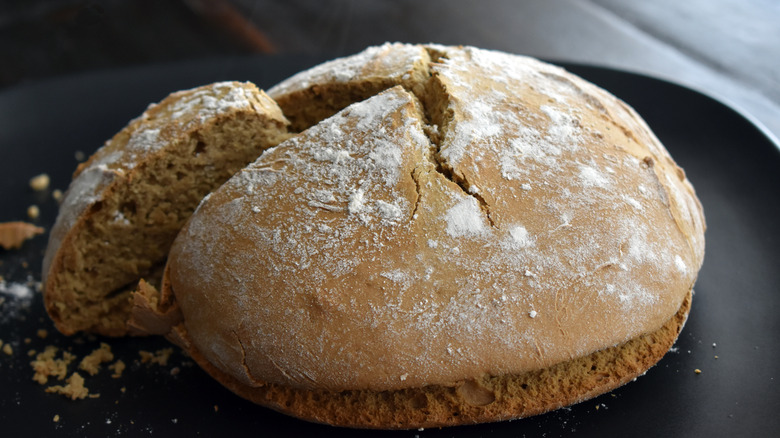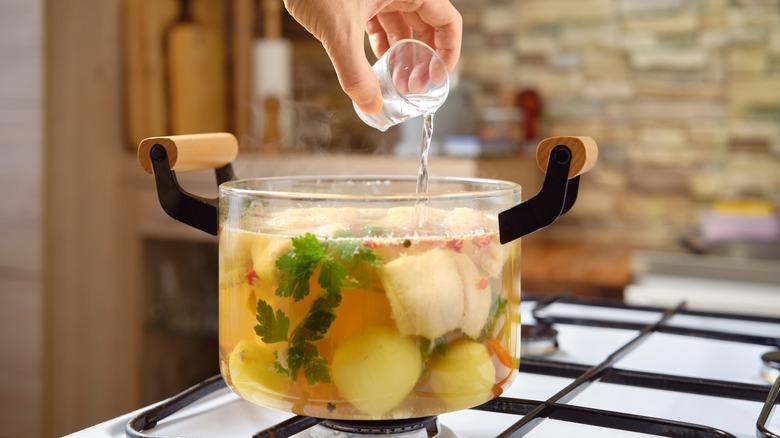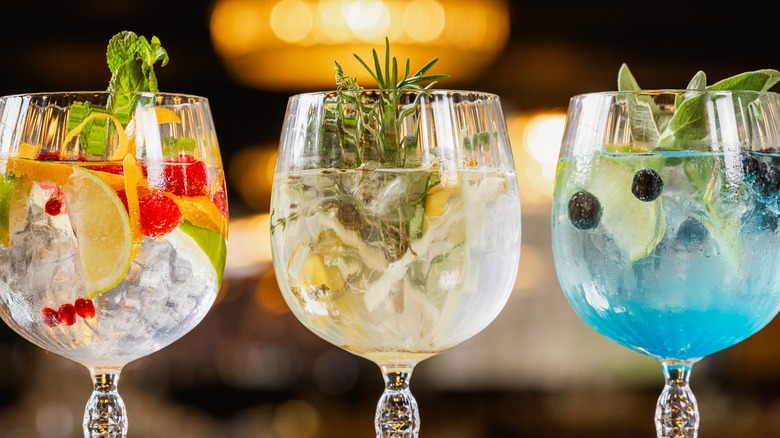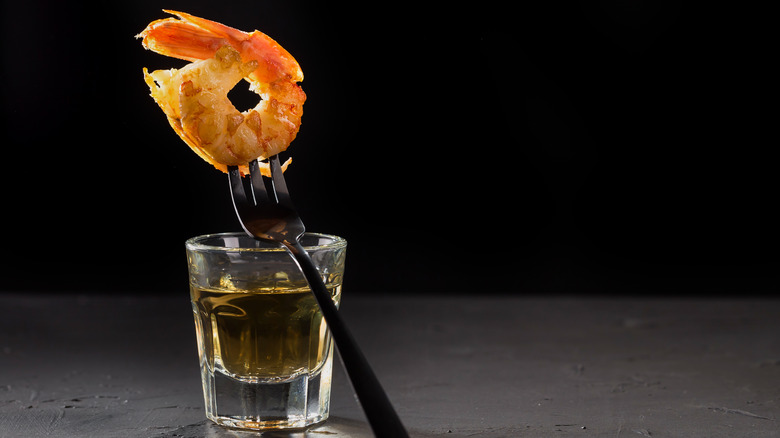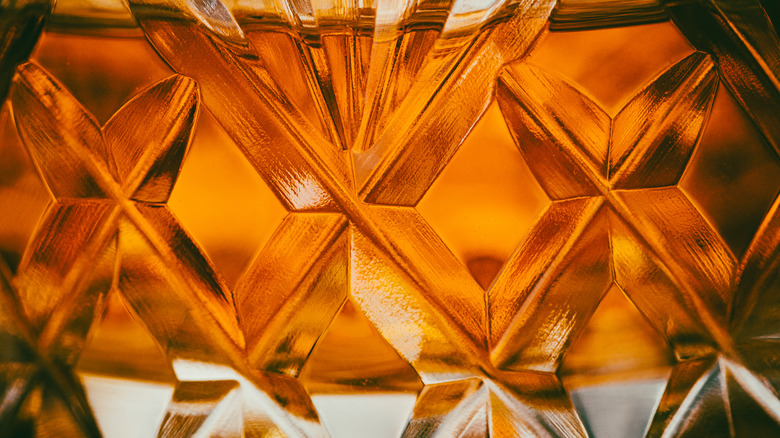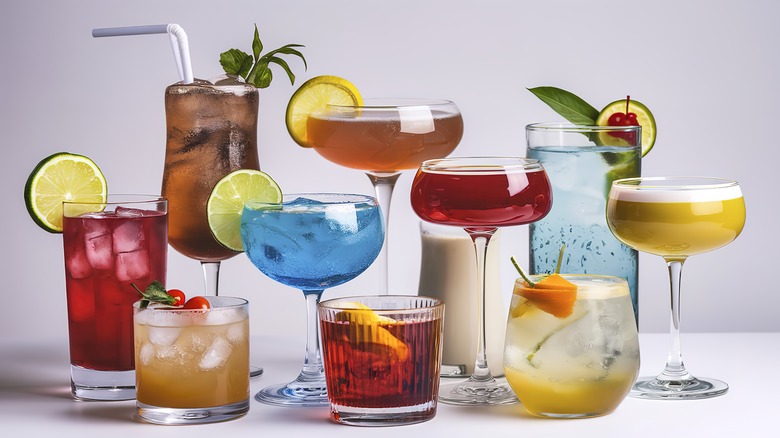Expert Advice On Cooking With Alcohol To Unlock Delicious Flavor
There are lots of ways to introduce flavor into home-cooked meals, and one of the best is alcohol. From red and white wines to beer and spirits, they can bring a depth and complexity to food, elevating even the simplest recipe. We've all watched as TV chefs put their thumb over the end of a bottle and slug it into a pan — but if you've never cooked with alcohol before, there are plenty of questions to be answered.
Is using too little wine in food as bad as too much? How can you tell if the alcohol in your recipe has all gone, and is it really okay to serve a meal made with whiskey to kids? We turned to experts Rocco Carulli, owner and executive chef at R House, chef Renee Guilbault, CEO of The Open Food Company, and Julie Marble, executive chef of Levy Restaurants for ArtsQuest, for their tips on how to achieve delicious flavor when cooking with alcohol.
What happens to alcohol when used in cooking
Many of us don't think about the chemical changes behind the cooking process. We just want our meals to taste good and not be raw or burned. But what happens to alcohol is interesting. It is regarded as a volatile compound because it evaporates at a lower temperature than water when heated: 173 F rather than 212 F.
How fast that evaporation happens depends on what type of alcohol we are adding to our recipes. "Spirits burn off quickly in high heat, while wine in a slow braise retains more complexity," said Rocco Carulli of R House. Other factors affecting what happens to alcohol include the temperature, and how long it's cooked for. Get all that right and your final dish will have a lasting, distinctive flavor with none of the "buzzy effects," said Renee Guilbault, CEO of The Open Food Company.
The qualities alcohol can bring to the flavor of a dish
Some recipes have a handful of ingredients, while others need a laundry list of items. No matter how few or many are called for, each component should bring something to the finished dish. Many ingredients are pretty straightforward: Sugar sweetens, mushrooms add umami, but alcohol has more flavor facets that you can shake a wooden spoon at.
Like salt, alcohol can extract and enhance flavors, driving their aromatic compounds deeper into the dish. The real joy is that different alcohol products work in different ways. If you're looking for more acidity and depth, wine will do the job. Beer adds richness and body to a recipe, while bourbon – whether it comes from Kentucky or not – and brandy introduce warmth and complexity. It's worth experimenting, as the flavor qualities of alcohol can change depending on the ingredients it's paired with.
Common mistakes that can impact the final flavor
There are a few mistakes to make when cooking with alcohol that can negatively affect the end result. Not cooking it for long enough can leave food with an unintentionally boozy flavor or a raw, harsh taste. Julie Marble, executive chef of Levy Restaurants, advised home cooks using dry red or white wines in their recipes to be patient. "The longer you reduce it, the richer your end flavor will become," she said.
For Rocco Carulli, owner and executive chef at R House, another major pitfall is adding too much alcohol too late, overwhelming the recipe. He also recommended giving any alcohol in a dish as long as it needs to integrate with the other ingredients. The Open Food Company's Renee Guilbault's advice for recipes that take time to reduce is not to season as you go. "The salt can intensify dramatically while cooking and that can completely ruin a dish," she warned.
Using alcohol in sauces, braising liquids, or marinades
There's more to using alcohol in recipes than sloshing some into a pan and hoping for the best. For an intense flavor addition that raises the game for a variety of sauces, cook your wine on a steady simmer for about 12 to 15 minutes, or until the liquid has reduced by half. "The smell will change once the alcohol has evaporated," said chef Julie Marble, Levy Restaurants.
Alternatively, use alcohol as a way to deglaze a pan. Add a few ounces of alcohol, scrape up the bits from the bottom of the pan that have caramelized, and reduce the liquid down to just a touch of moisture, before adding stock or cream. According to Renee Guilbault, CEO of The Open Food Company, it will "elevate your sauce in a way not many other things can." The really adventurous could try flambéing. By quickly caramelizing the sugars in the alcohol, this dramatic technique adds a flavor profile all its own.
Balance the alcohol with other ingredients for harmonious dishes
When it comes to cooking with alcohol, balancing it with other flavors is key to a harmonious final dish. Use too little and the flavor could lack depth and complexity, while too much might leave the entire thing tasting bitter. To make sure you don't swamp your recipe when cooking with alcohol, it's wise to use a little at a time and taste after each addition.
Chef Rocco Carulli, R House, advised home cooks to think of alcohol in the same way as seasoning: It should enhance a meal, rather than dominate it. Depending on the recipe, he recommended balancing any alcohol being used with the fat, acid, sweetness, or umami of a dish. For example: "Wine loves butter, beer likes spice, and spirits often benefit from citrus or herbs," he said.
The quality of the alcohol can impact the final flavor
Cheap ingredients don't automatically result in lower-quality food: Many lower-price cuts of meat make for delicious meals. That said, when cooking with alcohol, quality does matter. Chef Julie Marble's rule of thumb is to avoid anything that you wouldn't be happy to pour into a glass and drink yourself.
Steering clear of cheap harsh alcohol will avoid your food tasting bitter, but you don't have to splurge on a super-expensive bottle. If you're planning to boost a sauce with a dash of wine from the fridge (and yes, there are smart tips to chill red wine), something in the mid-price range is best, and the same applies for spirits or liqueurs. Although they might cost a few dollars more, you'll get value for money by using them in a variety of delicious recipes.
Non-alcoholic versions don't have the same flavor impact
More people are turning to low or non-alcoholic wines and beverages, whether it's for health benefits or because they think they taste better. Non alcoholic wines, beers, and spirits do have many attributes in common with their boozy counterparts, but when it comes to cooking, the gap between the two quickly becomes apparent.
While many non-alcoholic products taste similar and can enhance the flavor of many dishes, they don't have the same extraction power and complexity. "You'll need to adjust with acids, sugars, or umami boosters to compensate," advised chef Rocco Carulli of R House.
Tried-and-tested ways to enhance the flavor of food with alcohol
Chef Rocco Carulli loves the flexibility of cooking with alcohol. "It's incredibly versatile when used thoughtfully," he said. From deglazing, poaching, and reducing, to marinating, infusing, and flambéing, there are lots of techniques that can boost flavor. If you're a novice, Carulli suggested starting small by adding a splash of grape-based grappa to a risotto, or the Italian herbal liqueur amaro to whipped cream.
You can also try poaching fruit in wine or port, folding a drop of gin into a cucumber granita, or adding a dash of mezcal to elevate a mole sauce or vinaigrette. "One of my favorites would be using a Godiva chocolate or a Bailey's in whipped cream or a buttercream icing," said chef Julie Marble. She also recommended using fruit-flavored spirits to add flavor to a caramel sauce or brown sugar glaze.
Use the right kind of alcohol for maximum flavor
"Cooking with alcohol can be the best way to bring a tasting or a pairing to life," said Julie Marble, executive chef of Levy Restaurants. Getting that pairing right can be easier said than done. The trick is to ask yourself what the alcohol in a recipe is being asked to do. Are you looking for acidity? Do you want to enhance the sweetness of a dish, or introduce deeper, more complex flavors?
Rocco Carulli, owner and executive chef at R House, advised people to give cooking wines a wide berth as they lacked flavor and can be high in salt. He recommended using good quality wines and spirits we would drink ourselves, then matching the alcohol's profile to the dish. "Red wine for earthy or rich flavors, white for light and acidic, bourbon or rum for sweetness, [and] tequila or gin for brightness," he suggested.
Using alcohol to boost flavor without cooking
A pinch of salt, a drizzle of olive oil, or a dash of acid can elevate a dish from good to great. Spirits and liqueurs can have a similar impact — without requiring any cooking. Chef Rocco Carulli, R House, says using alcohol to boost flavor (without cooking) can be done in moderation.
Many of us might think of adding a drizzle of liqueur to a dessert, or infusing whipped cream with some good quality rum. But did you know you can bring a whole new flavor profile to a hearty soup by adding a splash of sherry? Carulli warned raw alcohol should be used sparingly and always in balance with the overall dish.
Does all the alcohol evaporate when it's heated?
There's a long-standing belief that the process of heating wines, beers, liqueurs, or spirits will eliminate 100% of the alcohol they contain. Our experts have confirmed this is not true. "A flambé might burn off most alcohol quickly but a sauce simmered for 15 minutes still retains some," said chef Rocco Carulli.
Health experts have also reached the same conclusion, with one study revealing between 4% and 85% of alcohol is retained after cooking. How much alcohol remains in your recipe depends on three factors: How long it is cooked for, the method of cooking, and the size of the pan or pot you're using. Although a trace of alcohol is left no matter what we do, it's worth remembering all the flavor benefits it brings to the end result.
Is it safe to serve food cooked with alcohol to young children?
Science has shown that up to 85% of the alcohol used in cooking can remain in our food, begging the question: Should these sorts of dishes be served to young children? Many chefs — Julie Marble, Levy Restaurants, included — do not recommend serving food that has been made with alcohol to kids. The problem is, a wide range of products contain an accepted, low level of ethanol, including fermented baked goods, fruit juices, and even baby foods.
As shocking as that may sound, it does put things into perspective. Adding a little splash of red wine to a spaghetti sauce for a family dinner should present little or no health risks for most children. Rocco Carulli, owner and executive chef at R House, recommends cooking the food long enough for most of the alcohol to evaporate, usually around 15 minutes. "If you're concerned, use substitutions like broth, juice, or vinegar-based reductions," he added.
The impact of wine on the flavor of dishes
The various types of alcohol have a different impact on recipes. Red wine brings richness, depth, and savory balance. It is great in stews, braises, or reductions, and anything involving mushrooms, beef, or root vegetables. "It adds a heavy richness and deeper flavor profile to a heavier dish like beef, duck, or pork," said Julie Marble executive chef of Levy Restaurants. White wine affects foods in almost the opposite way.
Where red wine provides depth of flavor to hearty dishes, its white counterpart brightens and sharpens. It brings a touch of acidity and light fruit notes to a wide range of recipes, especially those centered around seafood and poultry. White wine also adds an extra dimension to cream sauces, or rich risottos. "Think of it as a squeeze of lemon with elegance," said Rocco Carulli of R House.
How beer adds flavor to a dish
For many people, beer is more often an accompaniment to food, rather than a recipe ingredient. We're missing out by just sipping it, according to our experts. Like many alcoholic drinks, there is a wide variety of types to choose from. "Dark beers add maltiness and depth to stews and chili," said Rocco Carulli, owner and executive chef at R House, who also recommended pairing beer with stews or sausages.
If, like chef Julie Marble, your taste runs to lighter beers, they're ideal for bringing freshness as well as a subtle bitterness to recipes. "Beer can enhance something as simple as a cheese sauce," she added. If you want to make light-yet-crispy batter for fried fish, swap the water in your batter for beer to get amazing results. Beer also brings depth to braises, and can give a delicious twist to the flavor of baked goods.
Go beyond pasta with vodka
If you think the best way to enjoy vodka is over ice, you're in for a pleasant surprise: It's one of the most versatile alcohols to use in cooking. There's a huge range to choose from but, like wine, find one you would be happy to drink. A good vodka has an almost indescribable taste — sometimes creamy, sometimes spicy. As Rocco Carulli, R House, pointed out, its qualities as a neutral solvent allow it to enhance the flavor of food without overwhelming it.
Arguably the most well-known use for vodka is in tomato sauce, but for Carulli, it is also great for pie crusts and even desserts. Home cooks can also use the potato-based spirit to deglaze pans, enhance marinades, and tenderize meat. Vodka makes for crunchy fried chicken, and can prevent cream sauces from curdling. Best of all, you can enjoy it in a cocktail when all the cooking is done.
Getting flavorful recipes with gin
This delicious spirit has been with us since the 1600s, but London's gin craze in the 18th century brought it to the masses. Since then, the number of gins has expanded to more than 5,000 different types, many of which are made with traditional ingredient juniper berries. Brands also drop in a range of other botanicals to create their signature tastes, from citrus peels to cinnamon.
Thanks to that endless variety of herbal, citrus, and floral notes, gin has also become a much-loved ingredient among chefs. Many recipes pair it with pasta and chicken, but that's not all you can do with gin. "It's fantastic in dressings, glazes, or desserts where botanicals can shine," said Rocco Carulli of R House. He recommended adding a dash of gin to give seafood sauces an extra flavor dimension, while his own gin-based creations include a herb-forward granita.
Take flavor to the next level with tequila
One of the greatest things about cooking with alcohol is the flavor variations you can bring to recipes is almost limitless, depending on the booze you use. Like many spirits, tequila has a wide range of tastes, ranging from fruity and floral to nutty and spicy. Some are better than others for cooking.
Rocco Carulli, owner and executive chef at R House, recommends pairing a silver tequila — the clear spirit, rather than the gold version– with lime for a great shrimp or chicken marinade. "It's all about matching the mood of the dish," he advised. Tequila paired with expertly deveined shrimp is a winning combination for executive chef of Levy Restaurants Julie Marble too, who uses it when sautéing the seafood. "Finish with lime juice and cilantro, add some chipotle if you're feeling spicy," she said.
What whiskey brings to a dish
Whisky — or whiskey — is one of the most nuanced and subjective alcohols, and it brings all that complexity to the flavor profiles of dishes when used for cooking. It's been a staple in restaurant kitchens for centuries, and is part of savory and sweet recipes all over the world. Like many alcoholic drinks, whiskey comes in a wide range of flavors and colors. Whatever type you choose, it will bring its distinct qualities to food, enhancing dishes in many different ways.
"Whiskey adds smokiness, sweetness, and oak," said Rocco Carulli of R House. "Bourbon gives vanilla and caramel; Scotch can add peat and spice." He recommended using a splash of whiskey in glazes — bourbon pairs particularly well with pork — and reductions to bring heat and depth to dishes. It can also add a bold kick to a variety of desserts, giving a twist to the Italian affogato, or imbibing a fruit and frangipane tart for a warming treat.
Tasting the top shelf: The flavor benefits of liqueurs
The liqueurs on the top shelf are ideal for more than just slugging into a range of cocktails. They can be an amazing resource for home cooks looking to inject flavor into their dishes. They're not the cheapest of ingredients, but they do provide value for money as a little goes a long way. A bottle of liqueur could last for years, which is more than can be said for a cut of meat or fresh produce.
Many chefs use top shelf liqueurs to bring depth and flavor to sauces, and they're perfect for dressings and glazes. "They're excellent in desserts like Grand Marnier in custard or Amaretto in cookies," said R House's Rocco Carulli. Apricot liqueur pairs brilliantly with duck or, if you know your way around a demi-glace — a rich, brown sauce that's delicious drizzled over meats – he recommends adding cherry liqueur for an amazing flavor.
